Continuum
Health Care - 1997 |
Using
the Tool to Create the Tool |
| The
core delivery system of MG Taylor’s work
is the navCenter environment. The navCenter is not
only the physical thing. The navCenter ENVIRONMENT
is the totality
of the work-processes, environments and technologies
focused on accomplishing a specific mission
that is critical to a real organization’s success. |
|
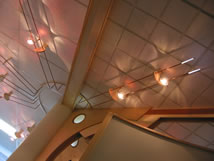 |
| Vandebilt
VCBH Innovation Center - 2002 |
|
| Every
organization is an unique culture charged with a different
mission; every NavCenter is different in it’s
specific manifestation. The PRINCIPLES that
determine what a NavCenter is and its basic operation
remain consistent throughout the many environments
that make up the family
of Centers. |
|
 |
| Hilton
Head knOwhere Store - 1996 |
|
| NavCenters
are used for a variety of purposes. The concept is
adapted to each circumstance by a process
that employs the “tool to make the tool.” |
|
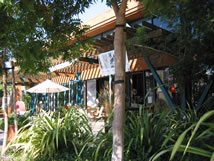 |
| Palo
Alto knOwhere Store - 1997 |
|
| This
notion of BOOTSTRAPPING has been - IS
- intrinsic to the navCenter concept. We used to say
“it takes a Management Center to make an Management
Center” and this is still true. We once made
a clear distinction between Management Centers and
navCenters but the utility of this discrimination
is fading. In the past, we employed the Management
Center tag to identify that broad phenomenon and the
navCenter tag for the various community, organization,
culture specific adaptations. Generally, we built
what we called Management Centers for our own use
and created navCenters for partners and clients. Then,
in 1997, we created the knOwhere Stores, the EY (now
CGEY) ASE environments; after that the distinctions
between Management Centers and navCenters became blurred. We use the term navCenter now and this refers to a full capacity environments distinct from an office or an event environment we may provide a partner or client. What we call an RDS is a portable event or work space. An RDS navCenter refers to a full capacity yet portable environment. |
|
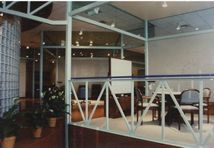 |
| Capital
Holding navCenter - 1992 |
|
| Today,
I think of the NavCenter as the generic idea
that is adapted to many specific organizational uses
such as ASE
environments, knOwhere Stores and a wide variety
of clients uses: the USAF Gossick
Leadership Center is focused on strategy and
aerospace development; The Detroit Edison Learning
Zone on education and employee development;
the Borgess
Navigation Center on strategy, health care
delivery, learning and community development, the
Langley NASA NavCenter on re-engineering and
intrepreneuring; The Vanderbilt
VCBH Innovation Center on research, Informatics
development, and dissemination of fact-based information
and methods to health care organizations. Of the several
environments now on the drawing boards, one is designed
for facilitating the executive
team, one on delivering corporate services another
on education
and community development and yet another on community
development. All together, the NavCenters that we
have built - and are building - for our own enterprise
purposes, and for partners and clients, provide environments
for many industries and governments: energy, health
care, consulting, higher education, aerospace, retail,
military, federal agencies, state governments; and
they focus on many disciplines: enterprise incubation,
R&D, architecture, product prototyping, learning,
and manufacturing. |
|
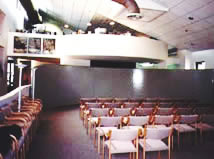 |
| AEDC
Gossick Leadership Center - 1992 |
|
| What
is common among all navCenters and how this
pertains to how navCenters are made and maintained
has to be understood by anyone desiring to make or
run one. navCenters can only be made by a ValueWeb
enterprise and they stay healthy to the extent that
a healthy ValueWeb
structure/process is in place. It can be equally argued
- and I do - that a ValueWeb Enterprise
requires the facilitation and augmentation provided
by navCenters to remain viable. Several navCenter environments
are necessary for a large, complex ValueWeb enterprise
to sustain itself and grow. ValueWebs and navCenters
are intertwined; they exist only if the other exists
- the demands of system
integration requires this. |
|
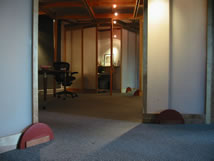 |
| Joseki
Group Offices - 2002 |
|
| What
does a navCenter environment do for a ValueWeb
system? It is the place where system integration
can happen. What does a ValueWeb enterprise do
for the NavCenter(s)? The web provides the resources
necessary for the NavCenter to exist and the variety
necessary for it to adapt appropriately. NavCenters
and ValueWebs are symbiotic
systems. |
|
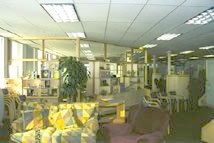 |
|
| It
is this symbiosis that determines the HOW NavCenters
environments are made and sustained. New NavCenters
come into existence because an existing ValueWeb enterprise
- or several of them - clones
the new NavCenter environment which is then adapted
(after a level of maturity is accomplished) to the
new culture thereby adding to the prior ValueWeb architecture
and, in time, building a new web of its own. We have
found no other way to do it. This new web, at least
at the beginning, must partially overlap the creating
web. When a new web is formed and “leaves”
the parent (if it does) it must grow to a certain
critical mass to survive. Even then, it will keep
usually some ties to the originating web. It has been
history - and sometimes painful history - that NavCenters
that focus only inwardly on one organization will
fad and die in a few years (at completion of the first,
mandated task). |
| At
present, it is the business of MG Taylor
to create NavCenters. As the ValueWeb matures, This
will become the work of organizations in the inner
clam shell of the web. This is consistent
with MG Taylor’s Business Model which is to
exit a business or product/service as soon as some
part of the ValueWeb can competently take it to scale.
To date (October 2002), we have direct experience
in the making of over 20 Centers of vatious kinds
each having applied our methods in the pursuit of
some objective. So far, the lessens have been consistent.
The making of navCenters and ValueWebs is an organic
process; it is rule-based; it requires rigorous methods,
discipline and passion; it is a transforming process
- to make a navCenter - and a navCenter is a tool
of transformation. A navCenter requires the resources
of a large organization even thought it is made to
support individual change-agents in their work to
transform organization; they are the neutral agent
- the
bridge - between today and the future. |
|
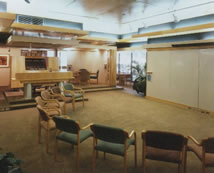 |
|
| When
Gail and I started MG Taylor we had a clear mission;
this mission
has not changed to this day. Simple stated, this mission
was to change the way people work. In our
experiences and research prior to starting MG Taylor, we had
discovered that for every complex systemic problem
our society faced there were many viable alternatives
being tested somewhere and in many cases in multiple locations on Earth. Why then was the adoption rate so slow?
Were people simply stupid? Did they not know about
the alternatives? Did they not care? In our experience
- then and now - these negative assumptions do not
hold up. What emerged time and again was that people
wanted to do far better than they were, cared passionately
about it, and felt trapped in the system in
which they worked. |
| This
“system” of work was everything including
the organizational structure, work protocols and processes,
the tool set and how it was applied, the way the information
was employed to the paradigm in which they operated.
To attack or attempt to change any one of these independently
of the other was an exercise in sub-optimization and
futility. A SYSTEM has to be dealt with, as
a system, whole. |
| OK,
how do you do that? This was the design question we
faced. Our answer was simple: if you want people to
think and act in a more comprehensive, systemic way
then put them in a total environment (physical place,
work process and tool set) that was made
that way and works that way and then facilitate
them in solving their problems; “build one version
of a better future, and invite people into it to design
their future.” And, this is what we did. |
|
Matt
Taylor
Palo Alto
May 28, 2001

SolutionBox
voice of this document:
INSIGHT • POLICY • PROGRAM
|
posted:
May 28, 2001
revised: September 12, 2010
•
20010528.322986.mt • 20021013.888800.mt •
• 20021111.777211.mt • 20100912.656554.mt •
(note:
this document is about 40% finished)
Matt
Taylor 615 720 7390
me@matttaylor.com
Copyright©
Matt Taylor 2001, 2002, 2010
|
|
|